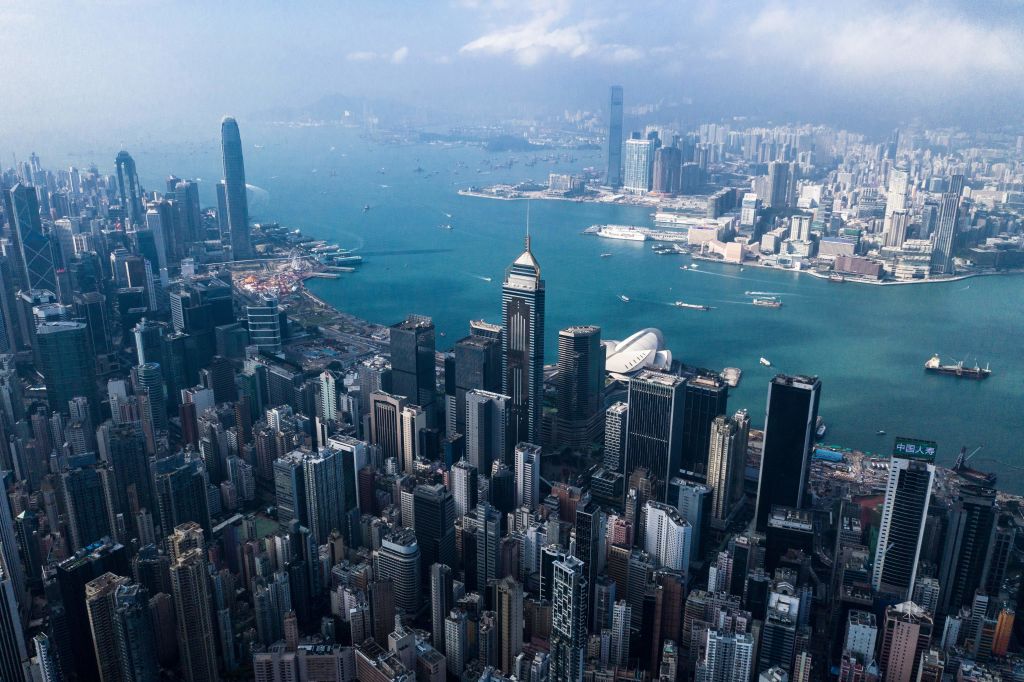
The Hong Kong government is continuing with efforts to boost its innovation and technology sectors by building industries in the deserted areas near the border with mainland China. In her latest and last policy address, the city’s leader, Carrie Lam, repeated her government’s long-standing ambition to turn the area bordering Shenzhen into a tech cluster.
The blueprint introduced by Lam on Wednesday shows plans to restructure the Innovation and Technology Bureau to reflect the importance of the city’s re-industrialisation. Under its new name – the Innovation, Technology and Industry Bureau – the department will be in charge of turning certain rural areas in the north of Hong Kong, primarily used for oyster farming, into high tech clusters.

Access deeper industry intelligence
Experience unmatched clarity with a single platform that combines unique data, AI, and human expertise.
“We will turn the San Tin technopole into the Hong Kong version of Silicon Valley,” Lam said, adding that the programme is aligned with Beijing’s 14th five-year plan.
Over the past four years, Lam’s administration has invested 130bn Hong Kong dollars (US$16.7bn) into the city’s IT sector. In her fifth and final policy address, the Chief Executive signalled that more land and financial resources would be set aside for the city’s tech strategy.
For example, the government will relocate the Lok Ma Chau checkpoint, an essential road crossing with the mainland, to the new Huanggang border control point in Shenzhen. In doing so, it can recover adjacent fish ponds and rural land to free up about 150 hectares to develop the new technopole.
The ambitious visions will, however, take some time to come to fruition. The city’s innovation chief said on Thursday that the plans for San Tin Technopole would take 10 to 15 years to complete.

US Tariffs are shifting - will you react or anticipate?
Don’t let policy changes catch you off guard. Stay proactive with real-time data and expert analysis.
By GlobalDataThat time frame would allow for the establishment of the necessary infrastructure, Secretary for Innovation and Technology, Alfred Sit Wing-hang, explained, according to the South China Morning Post.
The technopole – a cluster for tech and IT companies – will be developed at the Lok Ma Chau IT park and the nearby San Tin area, both located close to the border with Shenzhen.
The associate dean of the faculty of engineering at the Chinese University, William Wong Kam-fai, told the South China Morning Post that he agreed with the policy address as Hong Kong had to match the pace of advancement in Shenzhen and other Greater Bay Area cities.
Moreover, politicians in Beijing are advocating for stronger cooperation between the Guangdong province, Macau and Hong Kong. Last month, the central government revealed elaborate plans “to promote the interconnection of innovation chains between Hong Kong, Macau and the mainland”.
Chipmaking and silicon design are among the desired innovation chains, as are AI, the Internet of Things, financial tech and health services innovation.
For decades, Hong Kong was seen as the safe haven for tech companies shut out of China. Many Silicon Valley giants saw the city as a gateway to the mainland as it had laxer rules and was not subject to the same censorship.
However, as Beijing’s control over Hong Kong keeps growing, this is changing. The passing of the infamous national security law in 2020 was a significant paradigm shift. According to the law, Hong Kong police can demand that online platforms and network providers take down content deemed a threat to China’s security or restrict access to services.
As Beijing continues its crusade against the domestic tech industry, we can expect rules in Hong Kong to become stricter as well.
Adding insult to injury, in May of 2020, Donald Trump’s administration revoked a longstanding rule that gave Hong Kong a preferential status. The White House said that the Hong Kong Special Administrative Region was “no longer sufficiently autonomous to justify differential treatment in relation to the People’s Republic of China”.
The US formerly granted Hong Kong favourable trading terms – established as part of the process under which it ceased to be a British colony in 1997 – which allowed the originally semi-autonomous city-state, designated a “special administrative region” by Beijing, to operate as a separate customs territory for US government purposes. This meant that no special US tariffs were charged on the import or export of goods to and from Hong Kong, unlike the rest of China. This is now no longer the case.
Endorsing the Trump administration’s position, current US Secretary of State Antony Blinken said Beijing has increasingly worked to erode Hong Kong’s semi-autonomous legal status, effectively eliminating the autonomy it is meant to enjoy under past agreements.
“Over the past year, the People’s Republic of China (PRC) has continued to dismantle Hong Kong’s high degree of autonomy, in violation of its obligations under the Sino-British Joint Declaration and Hong Kong’s Basic Law,” Blinken said in a statement in March, indicating that the Biden administration would not reinstate the city’s preferential treatment.







